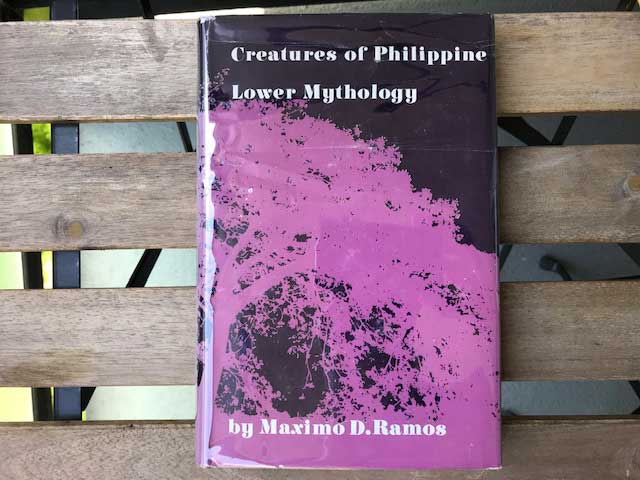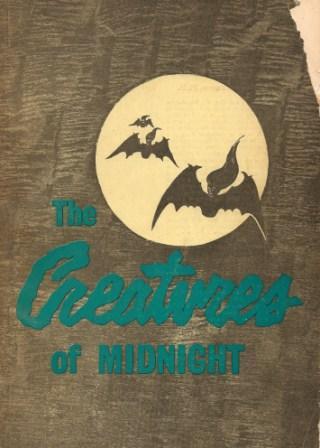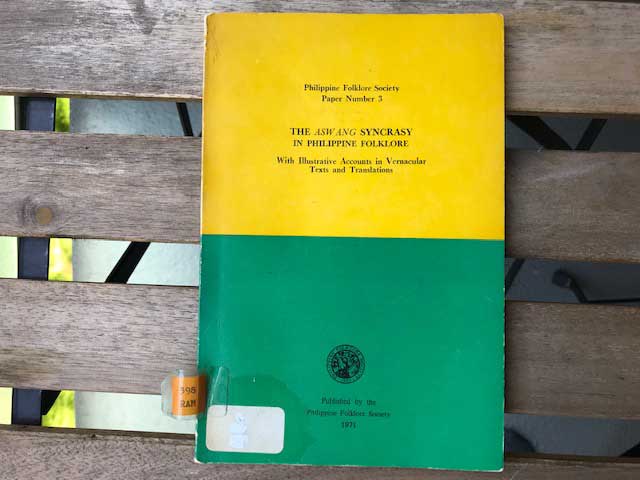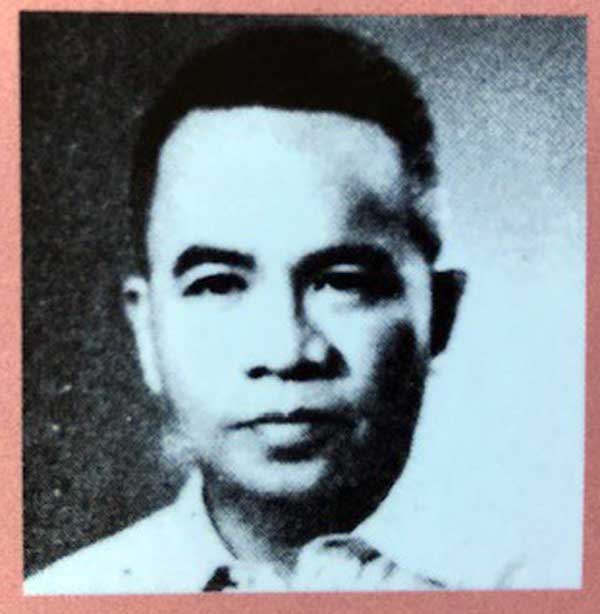MAXIMO DUMLAO RAMOS led a triple life as teacher, editor, and writer for over 45 years. Born on November 18, 1910 he was descended from the Dumlao and Ramos farming folk of Paoay, llocos Norte, who pioneered in Southern Zambales early in the 19th century. His first published work would subsequently be about folk beliefs in San Narciso, Zambales. In later work, he explored stories from his childhood in Boyhood in Monsoon Country.
He had a B.S.E. from the University of the Philippines (1934), an A.M. from Indiana University ( 1948) where he did course work under Stith Thompson, a TESL from the University of California (1963) where he profited from the tutelage of Wayland D. Hand, Director of UCLA’s Center for the Study of Comparative Folklore and Mythology from 1961-1974. Ramos received his Ph.D. from the University of the Philippines (1965) for his seminal work The Creatures of Philippine Lower Mythology.

Creatures of Philippine Lower Mythology was a pioneering study of the beings of the otherworld often mentioned to horrify Filipino folk. But this book was meant as a tool to get at the roots of Philippine culture and help develop the latter and was not intended to cause shivers.
What has hobbled the fascinating study of Philippine mythical beings is the many names they are known by, perhaps due to the number of Philippine languages, variously reckoned at 179. But this is so only in part; H. Otley Beyer estimated that the lfugao alone had “millions of gods.”
By looking behind the creatures’ names and examining their traits as reflected in Philippine folklore, Maximo D. Ramos scaled down the subject to manageable size and succeeded in categorizing the entire lower Philippine pantheon under just 12 types. In some detail he then defined the implications for the schools and society. He also related these creatures to those in better studied traditions, thus inviting further research.
The study of harmful spirits is more fruitful than research on the beneficial such as angels and gods which, withdrawn from human affairs, affect human lives little. The folk believe that the harmful spirits frequent and even inhabit their homes and places of work and thus profoundly influence their thoughts, behavior, values, and world view.
By identifying the personnel of Philippine lower mythology and examining the beliefs about them, Dr. Ramos touched the wellsprings of Filipino motivations and got at the matrix of the Filipino ethos.
Before his important 1965 thesis was published in 1971, Ramos was already making a name for himself as an author of Folklore and Mythology having published four titles on the subject. Tales of Long Ago in the Philippines (1953) and Philippine Myths and Tales for Young Readers (1968) were collections gathered from historical sources. His 1967 work, The Creatures of Midnight is perhaps the title that most Baby Boomers and Gen X remember from their childhood. Ramos’ hope was that after people got to know these creatures of lower Philippine mythology better, they would never fear them again. He further hoped that knowledge of these creatures would help enrich Philippine life and culture by artists weaving the beliefs about them in games, dances, songs, stories, poems, and pictures.

In 1971 The Philippine Folklore Society published The Aswang Syncrasy in Philippine Folklore, With Illustrative Accounts in Vernacular Texts and Translations, which was a bold attempt to present to the reader and to students of Filipino society and culture one of the dominant Filipino beliefs, the aswang. Ramos wrote, “What’s an aswang?” once asked Wayland D. Hand, fascinated by the conflicting traits glimpsed through the scattered material about this mythical being. I rashly volunteered to find out, little knowing that the search was to get me into unexplored territory and that to answer Dr. Hand’s question I must first categorize and classify the traits and functions of just about the entire lower Philippine pantheon.”

Ramos taught at the Cagayan, Lanao, and Mapa high schools (1935-47, minus the war years) and in each he was the faculty adviser and literary critic of the campus journal as well. He then moved into college teaching and, in hopes of academic fresh air, ended his 17-year service in the Philippine Normal College (1948-65) as English professor, director of publications, and chairman of the English department to become Dean, College of Liberal Arts and Sciences, University of the East (1965-70), and subsequently Dean, College of Graduate Studies & Research, Western Philippine Colleges, in Batangas City.
Maximo Ramos became the first editor in chief of Phoenix Publishing House, and was associated with the company from 1963 until his death on December 12,1988. As editor and consultant, he gathered together a team of teachers who were creative, understood the needs of Filipino students, knew their pedagogy, and, above all, were committed to the ideals of nationhood espoused by Dr. Ernesto Y. Sibal, founder of Phoenix Publishing and a pioneer in gathering government support for Filipino-authored textbooks. The leadership of Phoenix Publishing House in the textbook field in all subject areas on all three levels of the educational system is due, in a large measure, to the unfaltering loyalty and passion for work of Dr. Ramos.
While with Phoenix Publishing, Ramos never relaxed his own personal pursuit of the Muse and continued to write short stories, poems, and essays culminating in two titles, Patricia of the Green Hills and Other Stories and Poems and Remembrance Of Lents Past and Other Essays. At the same time, he devoted special attention to serious research on Philippine mythology and folklore. All these were done as he taught and performed administrative duties at the Philippine Normal College and later at the University of the East.

Ramos’ legacy has fired the imagination of Filipino students and inspired them to know more about their own folkways and folklore and to write them down for others to enjoy and appreciate. Dr. Ramos’s only limitation perhaps is access to Filipino language as medium of his literary output. But he has shown the Filipino student that one can master the English language and use it to advantage in portraying Philippine reality. And because the setting is Filipino and the experiences are part of the Filipino tradition, his writings appeals to children and adults.
His works, collectively titled REALMS OF MYTHS AND REALITY, consist of the following:
- TALES OF LONG AGO IN THE PHILIPPINES
- PHILIPPINE MYTHS, LEGENDS,AND FOLKTALES
- LEGENDS OF THE LOWER GODS
- THE CREATURES OF MIDNIGHT
- THE ASWANG COMPLEX IN PHILIPPINE FOLKLORE
- PHILIPPINE DEMONOLOGICAL LEGENDS AND THEIR CULTURAL BEARINGS
- BOYHOOD IN MONSOON COUNTRY
- PATRICIA OF THE GREEN HILLS AND OTHER STORIES AND POEMS
- REMEMBRANCE OF LENTS PAST AND OTHER ESSAYS
- THE CREATURES OF PHILIPPINE LOWER MYTHOLOGY
This above collection was published posthumously as a tribute to Dr. Maximo D. Ramos and as a contribution to Filipiniana. And therein lies the lasting contribution of Maximo D. Ramos not only to the study of Philippine folklore in particular but also to the understanding of Filipino society and culture in general.
SOURCE: Compiled from the various books of Maximo Ramos.
ALSO READ: The Problem and the Importance of “LOWER MYTHOLOGY” in Philippine Folklore
Jordan Clark is a Canadian born descendant of Scottish immigrants living on the homelands of the Lekwungen speaking peoples. His interest in Philippine myth and folklore began in 2004. Finding it difficult to track down resources on the topic, he founded The Aswang Project in 2006. Shortly after, he embarked on a 5 year journey, along with producing partner Cheryl Anne del Rosario, to make the 2011 feature length documentary THE ASWANG PHENOMENON – an exploration of the aswang myth and its effects on Philippine society. In 2015 he directed “The Creatures of Philippine Mythology” web-series, which features 3 folkloric beings from the Philippines – the TIKBALANG, KAPRE and BAKUNAWA. Episodes are available to watch on YouTube. Jordan recently oversaw the editing for the English language release of Ferdinand Blumentritt’s DICCIONARIO MITOLÓGICO DE FILIPINAS (Dictionary of Philippine Mythology) and is working on two more releases with fellow creators scheduled for release later this year. When his nose isn’t in a book, he spends time with his amazing Filipina wife of 20 years and their smart and wonderful teenaged daughter.


